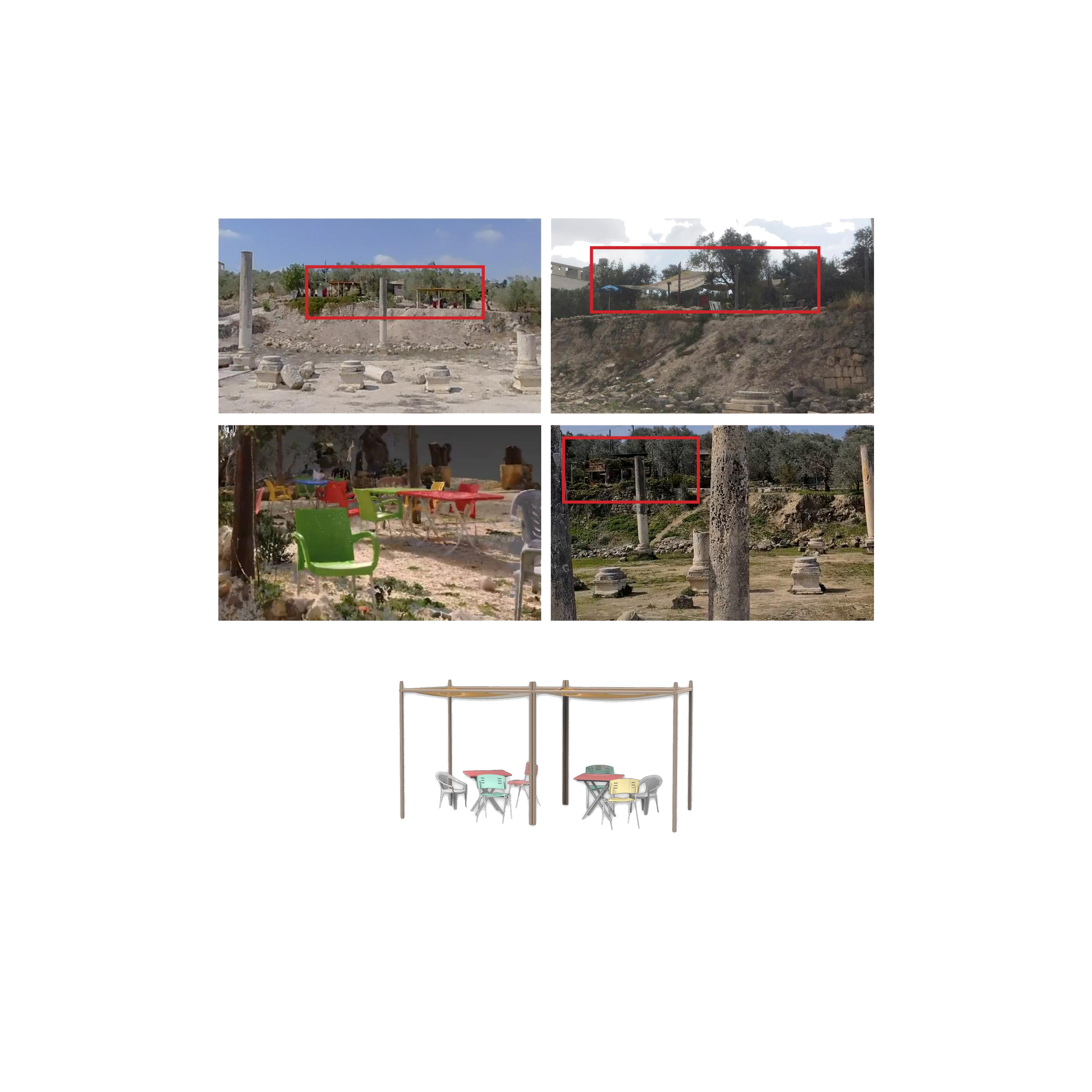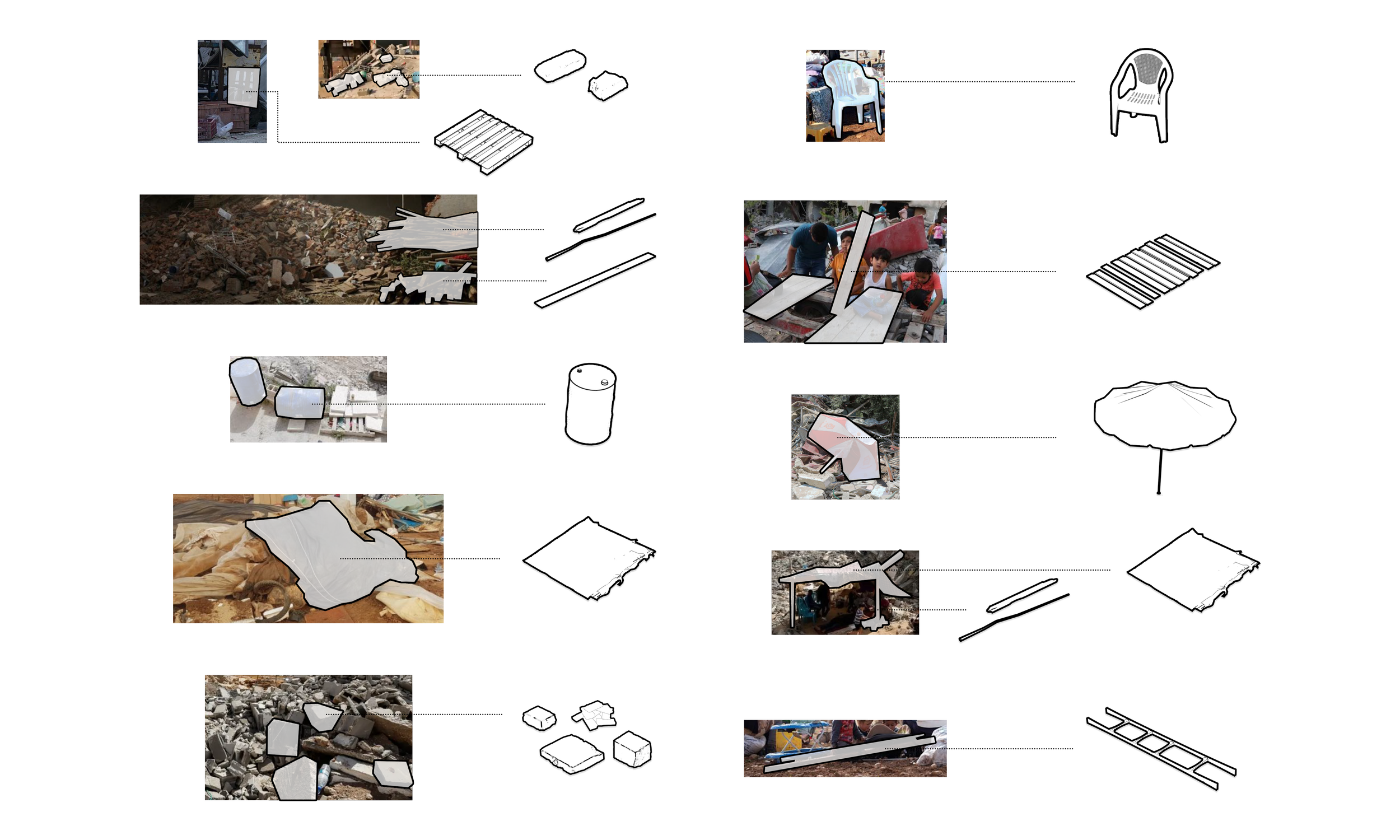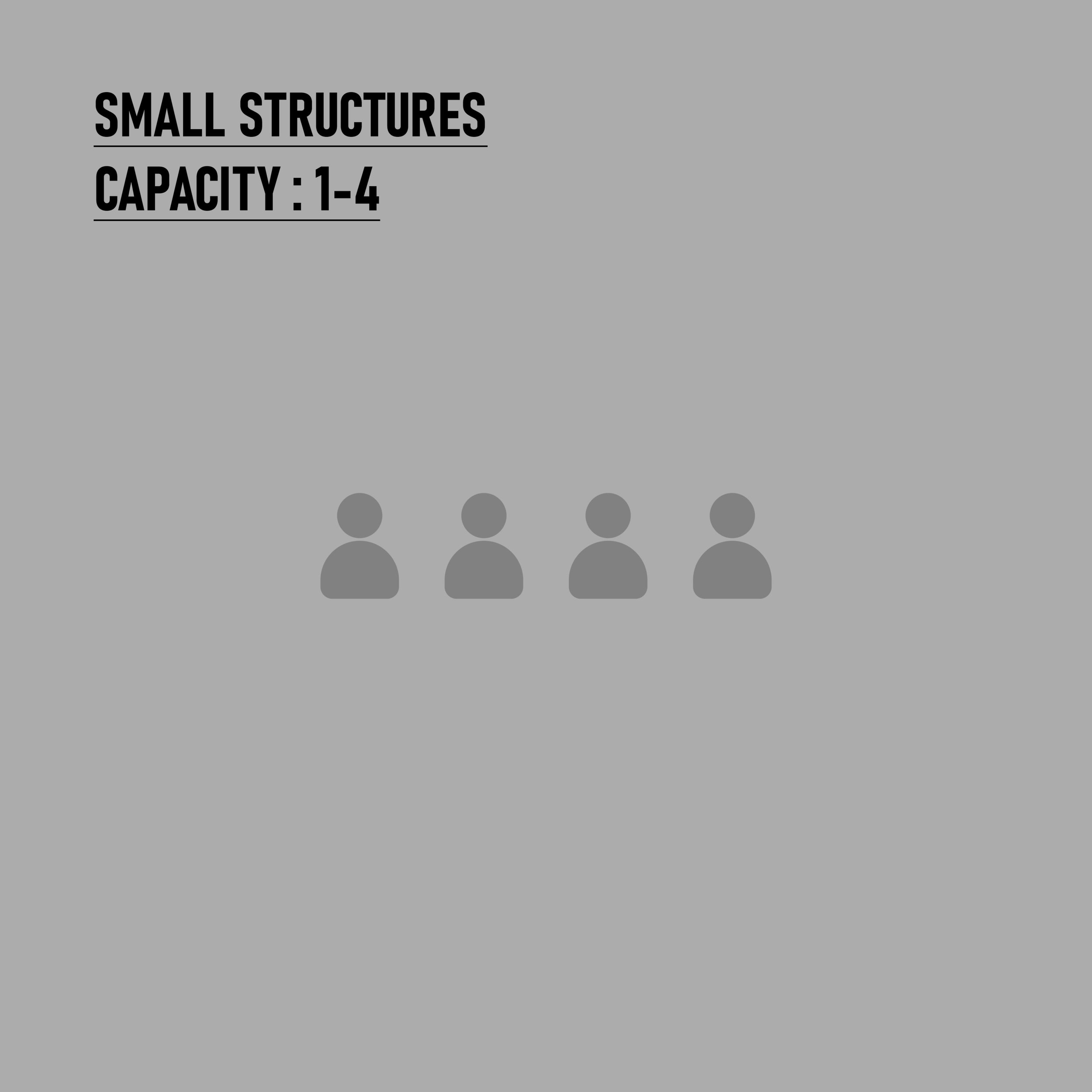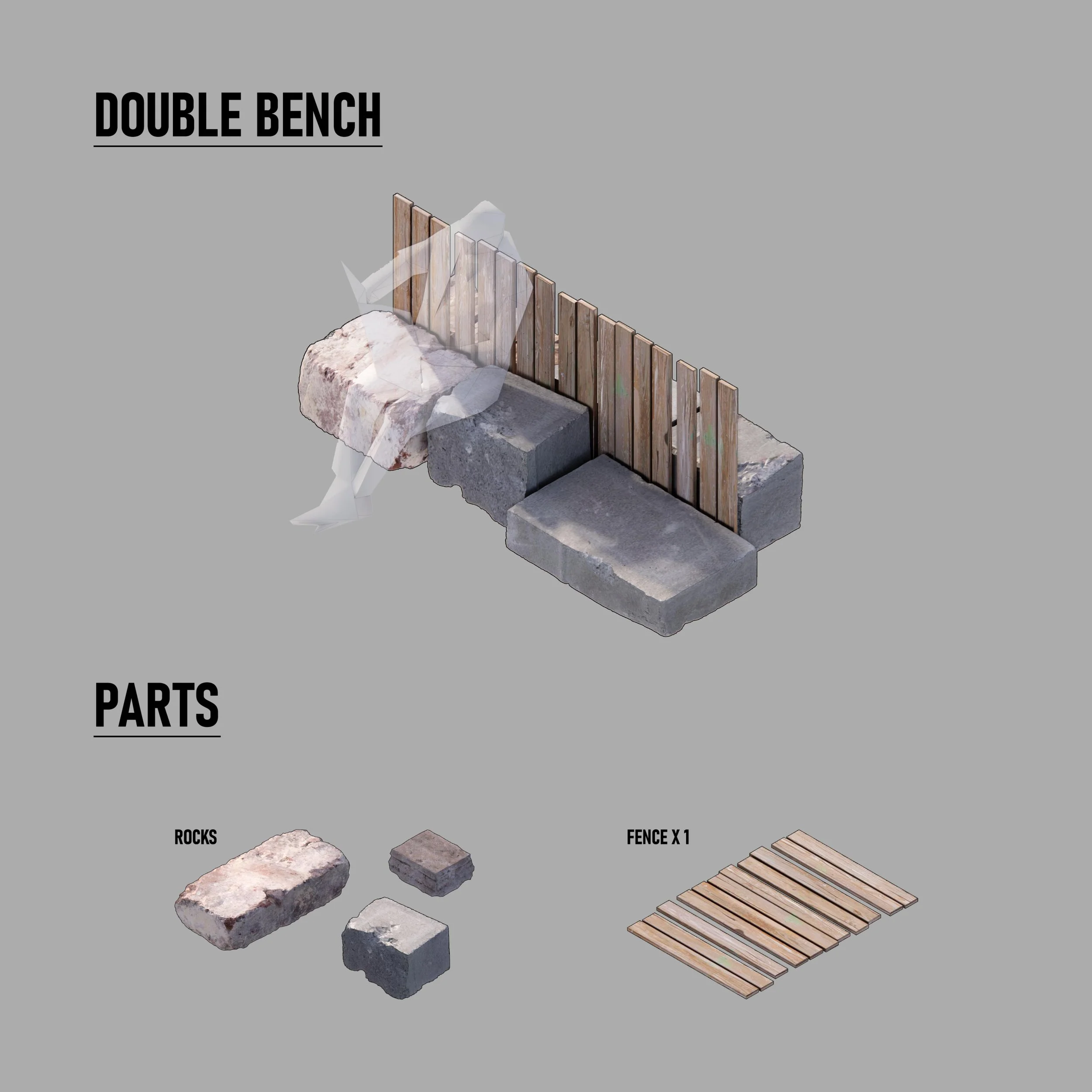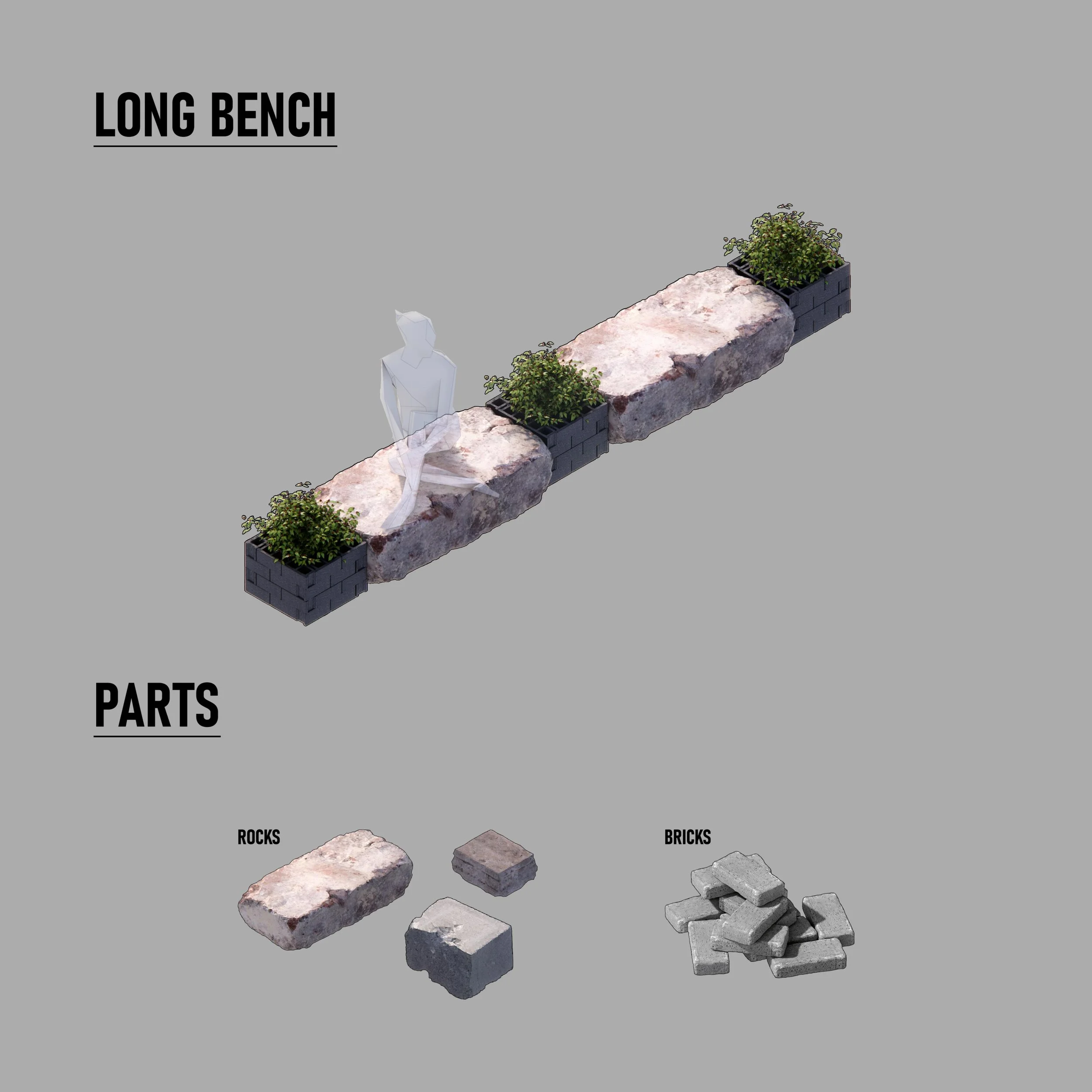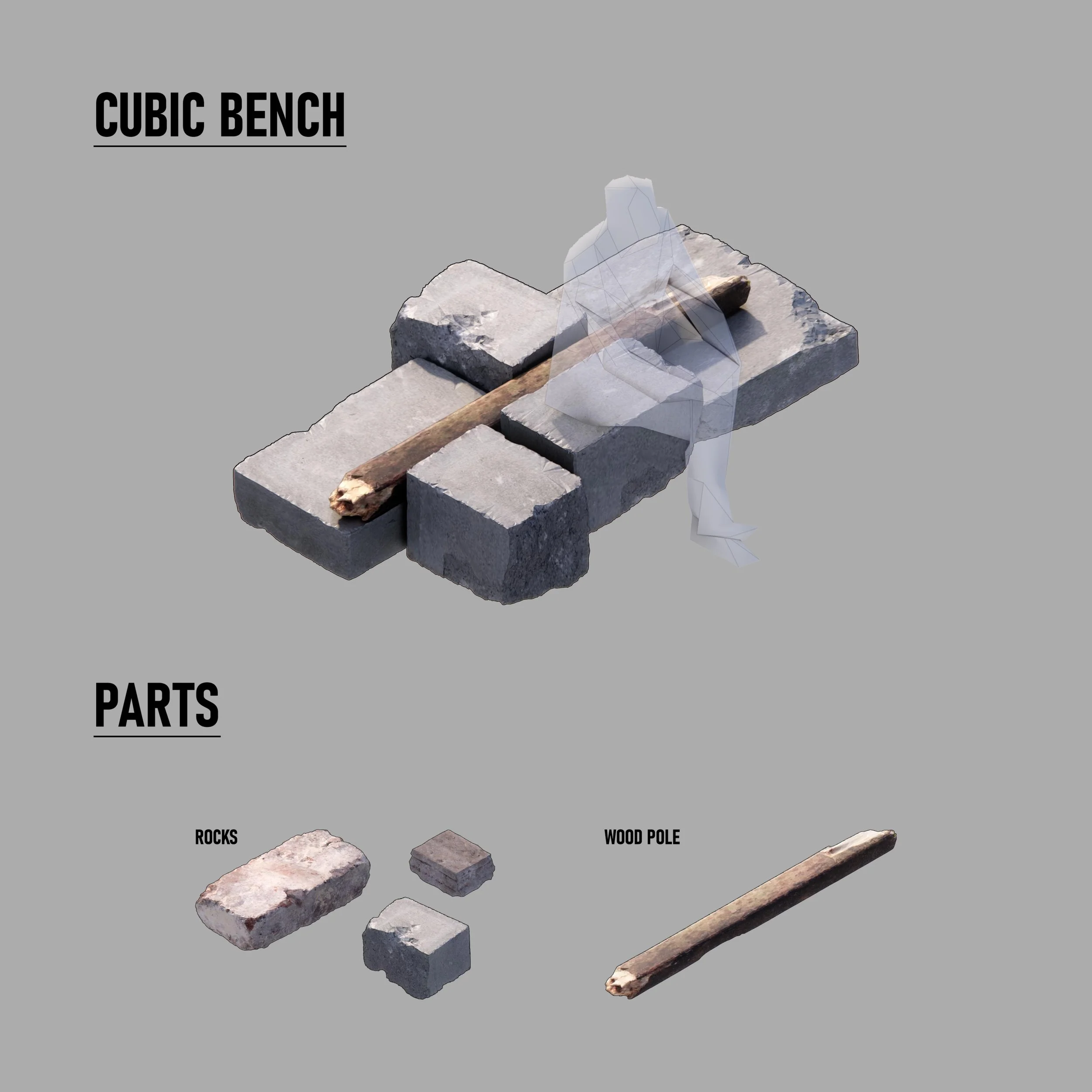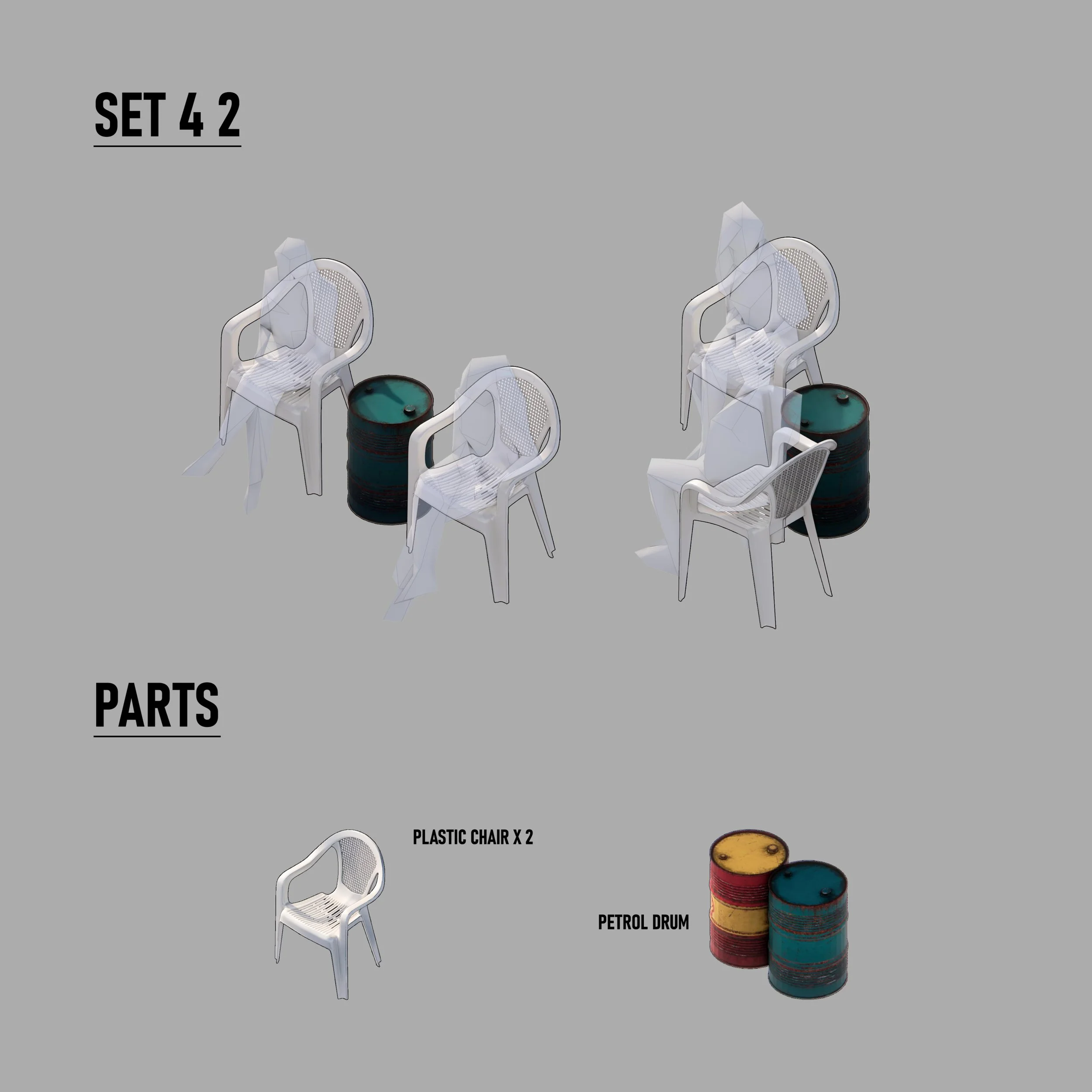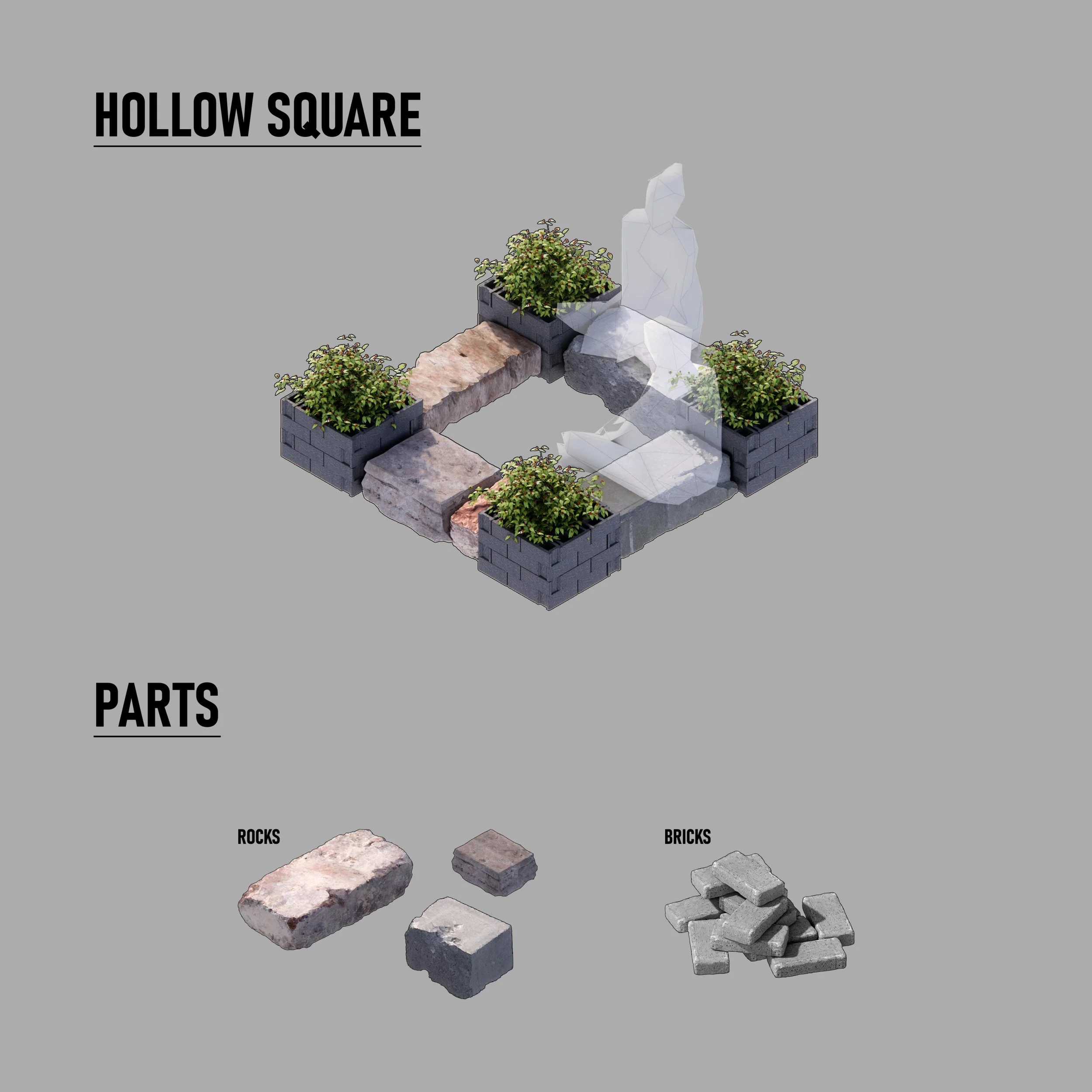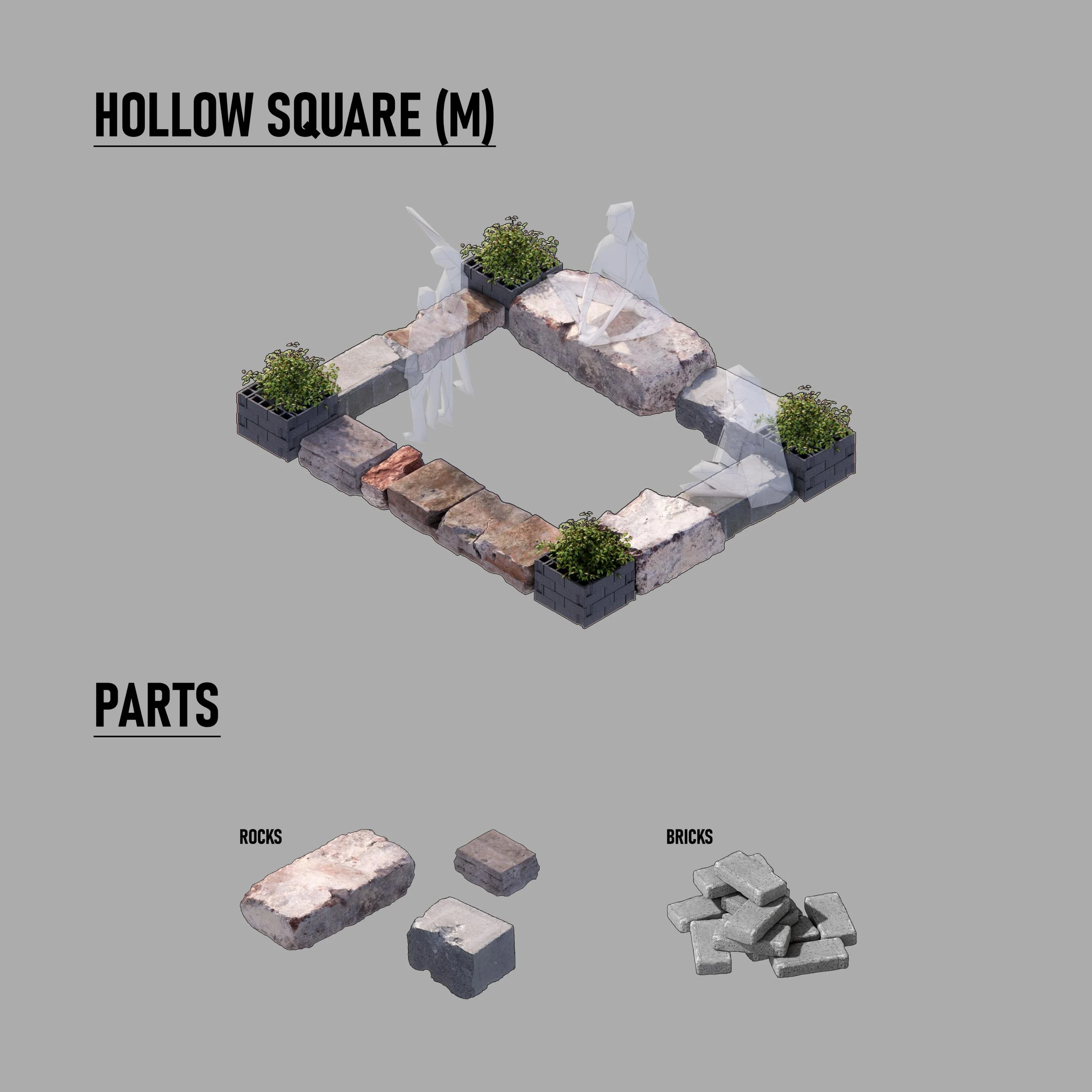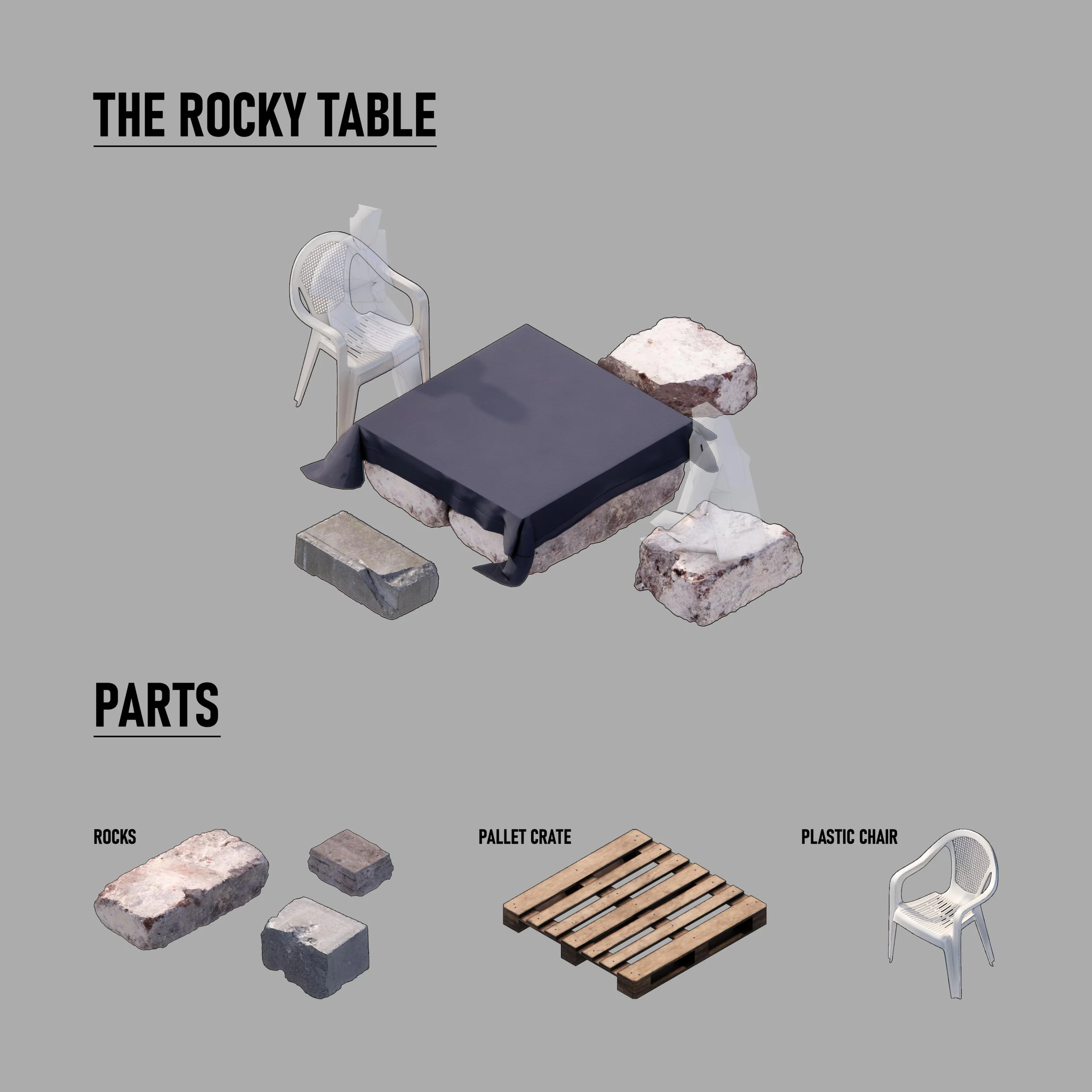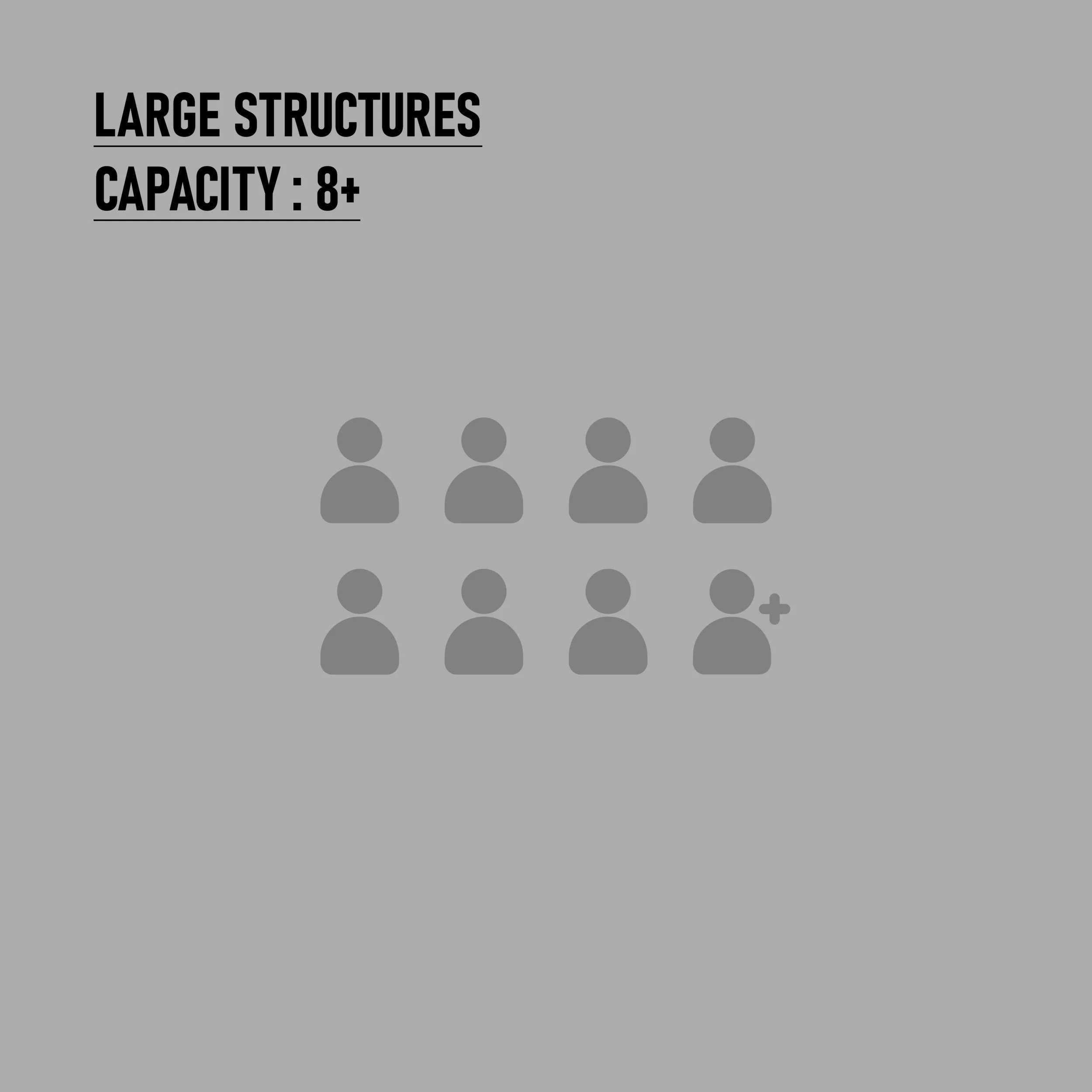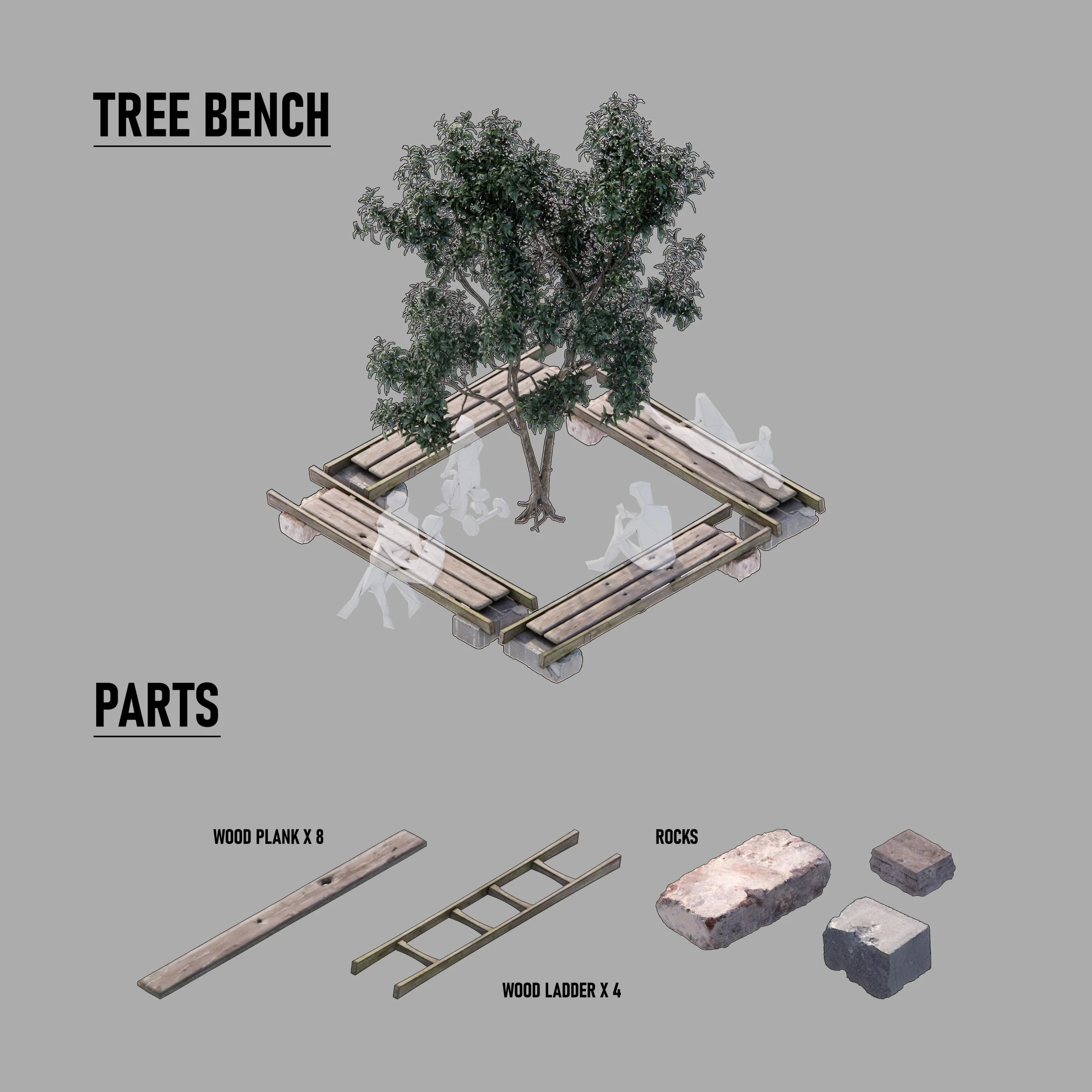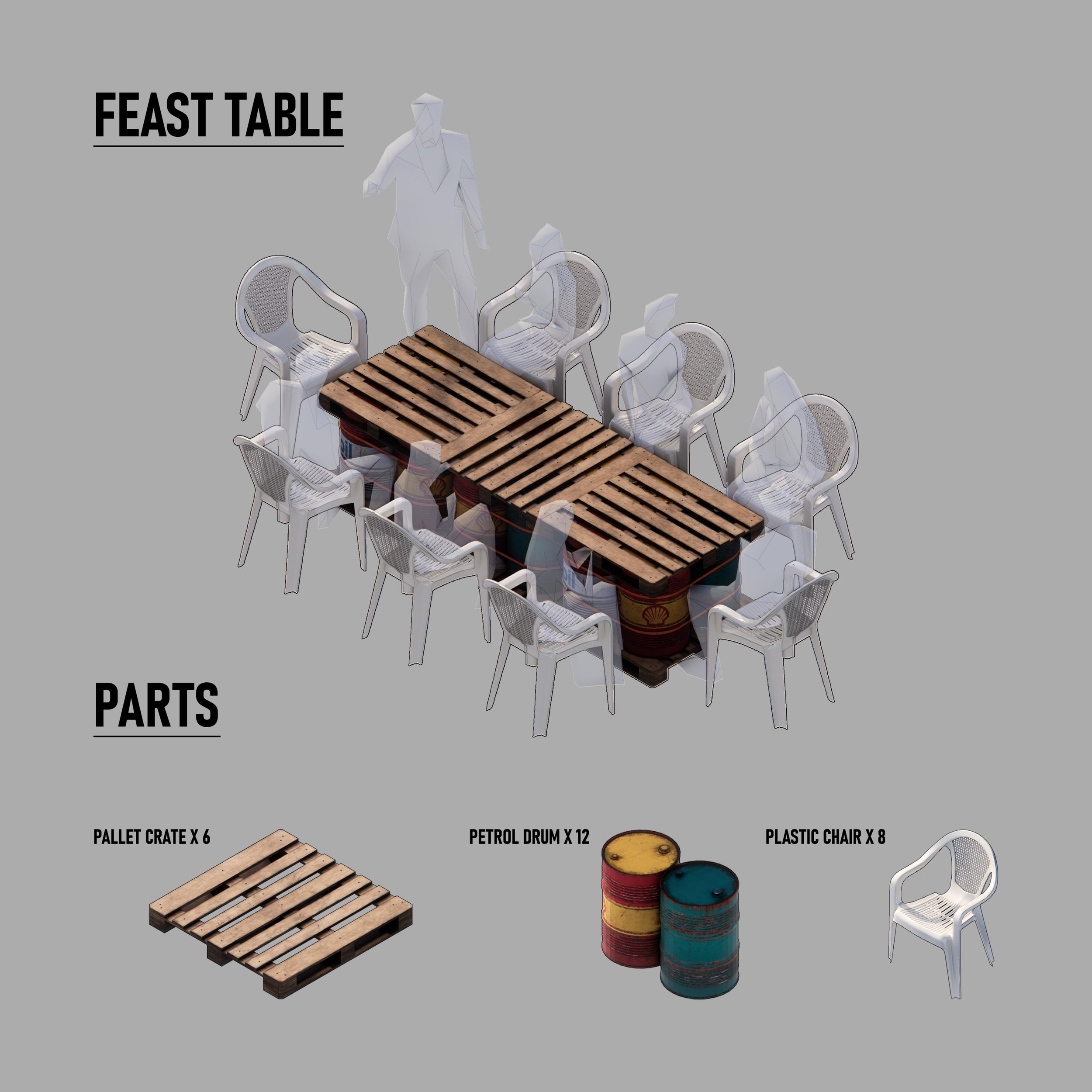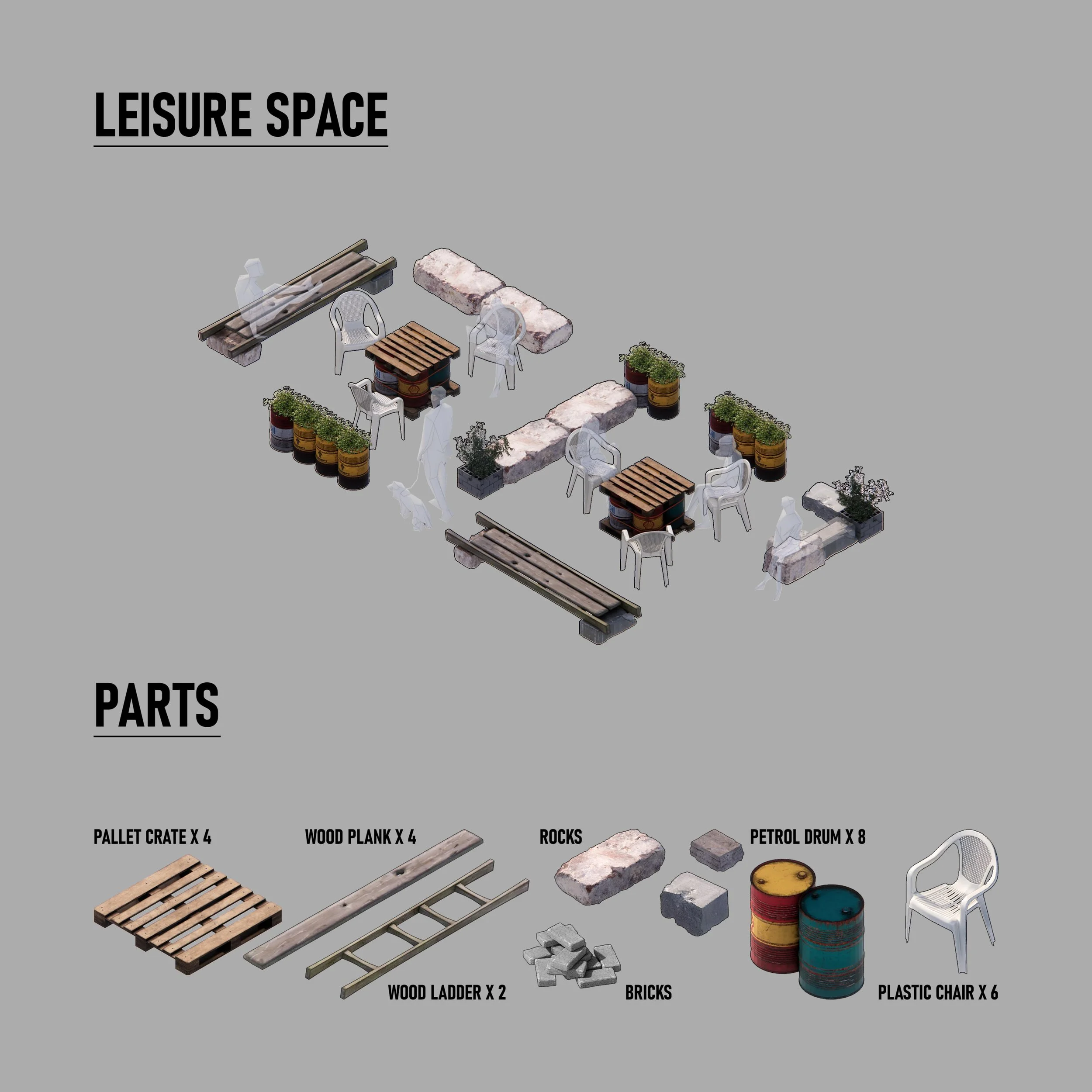
REBUILDING FOR RESISTANCE
The Café
From the models I realised that the structure doesn’t look like a traditional café which consists standard tables and chairs, Pastries display cases, menu board, cosy lightings, or even a proper shelter. But, you will immediately know it is a café. Asking myself the question: what is a café?
By looking through local cafes and old pictures, and rethink: What is a cafe? What makes up a cafe?
A restaurant and a tourist shop were destroyed at the entrance to the village on August 8 and 9, 2016.
According to locals, every time the cafe gets demolished, people will rebuild the cafe with sticks and found materials on the same location which in a way means that the cafe is indestructible or sustainable.
The act of reassembling the cafe is touching, although to locals it’s just they build up an easy shelter to have their coffee but what I see is an indestructible monument.
By examine through existing photos from different sources, I remodeled some of the structure of the current cafe. The structure is simple and shabby but effective enough to become a cafe. The basic components are wood, tapoline/cloth, and plastic table and chairs.
According to locals, every time the cafe gets demolished, people will rebuild the cafe with sticks and found materials on the same location which in a way means that the cafe is indestructible or sustainable.
The act of reassembling the cafe is touching, although to locals it’s just they build up an easy shelter to have their coffee but what I see is an indestructible monument.
By examine through existing photos from different sources, I remodeled some of the structure of the current cafe. The structure is simple and shabby but effective enough to become a cafe. The basic components are wood, tapoline/cloth, and plastic table and chairs.
Looking into the ruins in Sebastia and Palestine, they have a common category pattern. Organic materials include plastic, wood. Inorganic materials include stones, bricks, and concrete blocks, to name a few. Waste items such as old furniture can be reused to rebuild. From a neutral perspective, reusing construction waste can reduce resource consumption and environmental pollution, and is conducive to sustainable economic development.
‘Rebuilding as resistance’ is my concept, and the target is to enhance this spatial practice by designing an architectural manual and emphasizing the power of rebuilding as a crucial part of the power of Palestinian resistance. I designed a series of structures in this manual using discarded materials as a medium. These materials found in Palestinian land are empowered with culture, and using these materials symbolizes a cultural resistance to Israeli power.
Inspired by the temporary structure of the cafe, the meaning of this it’s not about materials and aesthetic unlike traditional architecture. It’s a spatial practice that involves culture, sustainability and resistance which the creators(locals) might not even notice. The input is culture, land as a medium. The output is the structure(s) which embodies resistance and culture.
Through 3D modelling software, I arranged various materials that could be found and got a series of combinations. When assembling them, I consciously divided them into small, medium, and large structures to ensure space diversity and adaptability to the environment. These designs range from small units, such as a long bench that can accommodate one to four people, to community spaces that can accommodate more than a dozen people.
These interventions are close to life and easy to arouse people's recognition and resonance locally and internationally. Reconstruction can be a weapon; creating a resistance structure close to life can play a critical role in the resistance in a broad sense. In addition to resistance, the output is a vision that includes future innovations and combines them with reality to gain global awareness. This manual will establish an optimistic vision and inspire local and international allies to join in the goal of resistance. The vision emphasizes the process of efforts. Similarly, the process of resistance comes from rebuilding again and again.
To achieve a piece of 'city interventions', each structure shall contain at least one structural material, such as steel, old oil drums, concrete, and bricks. Added to that foundation, people will have multiple choices depending on the found materials and the structure they would like to build. For instance, stone is a structural material, and wood pieces can be added to build a bench for people to rest. To ensure a certain level of aesthetics and some practical functions of each design, it is necessary to achieve a diversified combination of recyclable materials to achieve complementarity of function and shape and highlight the artistry of the structure. On a larger scale, these wastes are produced by the 'experience' of the city, which holds rich culture, and stories and create a vision for future resistance practices.
The resistance comes from rebuilding the structure again and again with the same materials, which the locals direct. From the case of rebuilding the café, the 'Rebuilding as Resistance' strategy has naturally been a part of the nonviolent resistance against Israelis. There are a few advantages that other forms of resistance may not possess:
1. the 'Rebuilding as Resistance' strategy is a social, collaborative activity, a positive response rather than a passive behaviour.
2. it is a practical approach, not equivalent to a general conflict resolution such as negotiation or mediation.
3. the strategy has the potential for influential social mobilisation capacity, while the risks to life and the political dilemma faced are relatively small.
Resistance movement in the West Bank is facing obstacles:
1. The Israeli Defence Force (IDF) is expert at using tear gas, sound bombs, rubber bullets and live ammunition to break up demonstrations.
2. Infighting among mixed political forces within Palestinian society has strengthened such as the Fatah–Hamas conflict.
3. The government cannot take on a substantive leadership role in the current nonviolent resistance movement due to institutional rules.
'Rebuilding as resistance' is a people-directed approach from a new angle and offer a more moderate long-term vision or strategy for the future Palestinian people's resistance. The purpose is to respond to the locals and encourage the act of rebuilding as part of the resistance, emphasizing the power of rebuilding as an integral part of the power of Palestinian resistance. And also tell people from outside of Sebastia that different architecture practice can be founded by ordinary people in different circumstances and environment, often born naturally without notice, and often come with great power.

